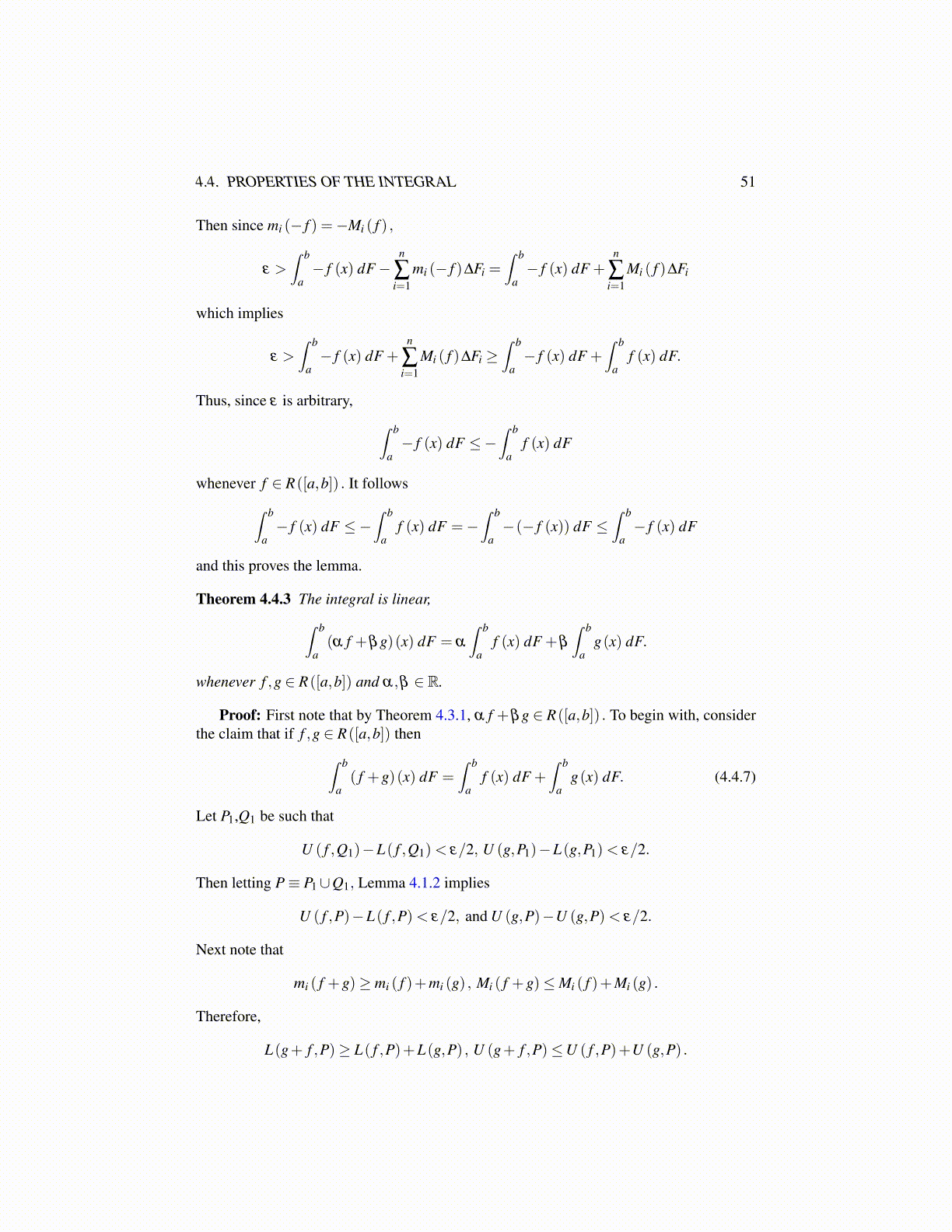
4.4. PROPERTIES OF THE INTEGRAL 51
Then since mi (− f ) =−Mi ( f ) ,
ε >∫ b
a− f (x) dF−
n
∑i=1
mi (− f )∆Fi =∫ b
a− f (x) dF +
n
∑i=1
Mi ( f )∆Fi
which implies
ε >∫ b
a− f (x) dF +
n
∑i=1
Mi ( f )∆Fi ≥∫ b
a− f (x) dF +
∫ b
af (x) dF.
Thus, since ε is arbitrary, ∫ b
a− f (x) dF ≤−
∫ b
af (x) dF
whenever f ∈ R([a,b]) . It follows∫ b
a− f (x) dF ≤−
∫ b
af (x) dF =−
∫ b
a−(− f (x)) dF ≤
∫ b
a− f (x) dF
and this proves the lemma.
Theorem 4.4.3 The integral is linear,∫ b
a(α f +βg)(x) dF = α
∫ b
af (x) dF +β
∫ b
ag(x) dF.
whenever f ,g ∈ R([a,b]) and α,β ∈ R.
Proof: First note that by Theorem 4.3.1, α f +βg ∈ R([a,b]) . To begin with, considerthe claim that if f ,g ∈ R([a,b]) then∫ b
a( f +g)(x) dF =
∫ b
af (x) dF +
∫ b
ag(x) dF. (4.4.7)
Let P1,Q1 be such that
U ( f ,Q1)−L( f ,Q1)< ε/2, U (g,P1)−L(g,P1)< ε/2.
Then letting P≡ P1∪Q1, Lemma 4.1.2 implies
U ( f ,P)−L( f ,P)< ε/2, and U (g,P)−U (g,P)< ε/2.
Next note that
mi ( f +g)≥ mi ( f )+mi (g) , Mi ( f +g)≤Mi ( f )+Mi (g) .
Therefore,
L(g+ f ,P)≥ L( f ,P)+L(g,P) , U (g+ f ,P)≤U ( f ,P)+U (g,P) .